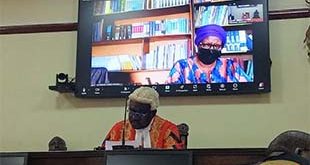
Kampala, Uganda | THE INDEPENDENT | At least 9,000 people living with HIV in Gulu have reportedly abandoned antiretroviral therapy-ART in as infections moved to grow from 8.4 percent previously to 14 percent currently.
William Onyai, the district health education officer for Gulu told Uganda Radio Network on Wednesday in an interview that only 18,000 of 27,000 people who tested positive are on treatment.
Onyai explained that the district has yet failed to trace them so as to bring them back for treatment and expressed fear that this may lead to more infections in the district and deaths.
He has thus implored them to adhere to treatment for suppression of the viral loads if they are to live quality life.
At Fourth Division Military Hospital, Dr. Lubega Paul, the hospital administrator revealed that of 1,700 they have on treatment, 12 percent have abandoned their treatments.
Dr. Lubega explained that those who abandoned treatments were due to many factors that include challenge of transport, poor nutrition and lack of care form the family members and stigma.
He however noted that the most affected age groups are children whose parents and guardians do not monitor them, just like taking them home drugs from the health facilities.
According to a 2018 report by the Global Information and Education on HIV and AIDS, an estimated 1.4 million people were living with HIV in Uganda while 23,000 of them died in the year but the infections in the subsequent year rose to 1.5 million people.
The report also points out gradual increase in the number of people living with HIV accessing treatment, though the country reached a tipping point where the number of new infections per year was less than the number of people beginning to receive anti-retroviral treatment.
The epidemic is strongly established it the general population with the prevalence among the adults aged 15 to 49 standing at 5.7% with women being disproportionately affected at 8.8% compared to 4.3% men and the national figure standing at 6.2 %, while 33% of affected children were still not on treatment.
******
URN
 The Independent Uganda: You get the Truth we Pay the Price
The Independent Uganda: You get the Truth we Pay the Price



Important news story. Too bad there are typos. Please proofread. Even just once.